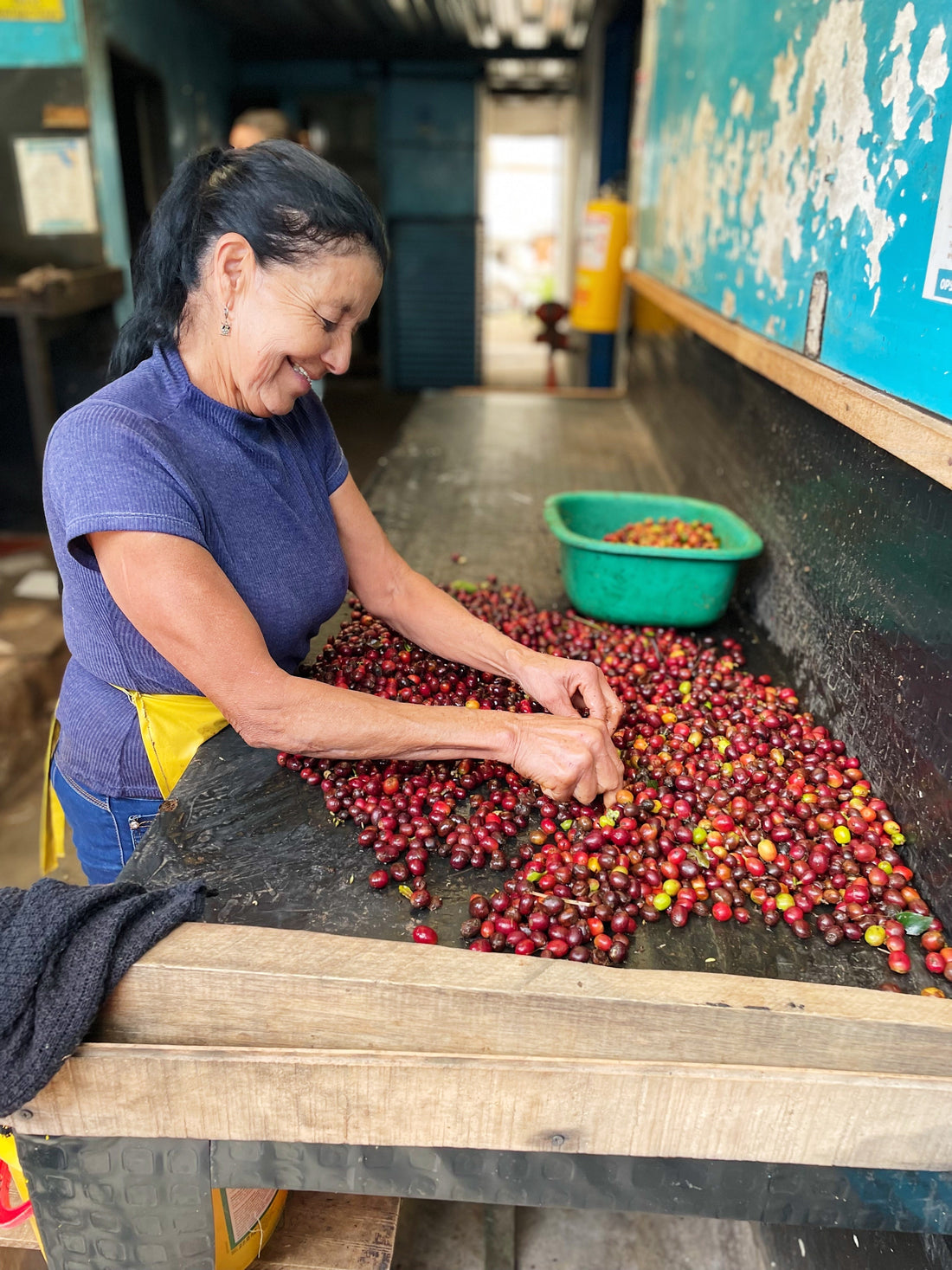At dose, we believe coffee can and should be many things. None more so than approachable. A common barrier to that approachability is knowledge and terminology. What do we mean when we talk about the coffee cherry, or the fruit of the coffee? When you see the words Washed Process, Natural Process, or Honey Process on your favorite bag, what role do those words play in the story of the cup you drink?
Let's begin by acknowledging that coffee is indeed a fruit! And while we aren't accustomed to seeing it for sale between the oranges and bananas at Trader Joe's, it doesn't make the statement any less true. If you can't make your way to the mountains of Colombia or any other coffee producing country to see coffee in its original form, this diagram from Six Depot Roastery and Cafe does an excellent job of creating a visual for what we are talking about.
(Anatomy of a Coffee Bean: courtesy of Six Depot Roastery)
That perfect, brown bean that most of us are so accustomed to seeing when we rise and grind actually begins as the 'seed' of the coffee fruit. Wrapped in layers of skin, mucilage (think pulp), and parchment (the final thin layer to be removed), the bean or seed is the final piece of the puzzle. 
(pictured above: freshly picked coffee cherries being hand sorted on the farm of Andres Cardona near Medellin, Colombia)
So how do we get from the bright red coffee cherry (like the ones above) to the roasted bean we're so accustomed to? The short answer: many, many steps. But it all begins with the three most widely used processing methods surrounding the coffee cherry.
Washed Process
The most common of the processing methods, the washed process begins with the coffee cherry being cycled through a machine that de-pulps and removes the skin from the seed. This leaves the mucilage and parchment as the remaining layers outside of the seed. Immediately after, the coffee is placed in some form of fermentation tank (often plastic barrels) where the coffee is left for hours to days. During this part of the process, microbes naturally begin to break down the remaining sticky mucilage. Once the fermentation process is complete the coffee is rinsed and left to dry for typically around a week before being dehulled (removing of the parchment) and ultimately sent to a roasting facility. Many in the coffee community view the Washed Process as the 'truest' form of roasting as the taste profile most resembles the coffee in its most basic form.

(pictured above: coffee entering the fermentation process)
Natural Process
Next, we have the natural process or as we like to call it 'The OG'. The oldest means for coffee processing (and most used in areas where water is a limited resource), the natural process involves leaving the entire fruit intact throughout the drying process. Unlike with washed coffees, natural coffees are injected with the flavor profile of the fruit itself, housed within all of its layers (the skin, pulp and mucilage). After a drying period that sometimes last months to get the cherry to a desired moisture content, the de-pulping process begins. Most often associated with fruity, juicy profiles these coffees tend to be more loud and less nuanced than washed coffees.

(pictured above: naturally processed coffee cherries on drying beds at Ventola Coffee)
Honey Process
In many ways, the honey process is like the Hannah Montana of coffee processing; because you get the best of both worlds! During this process the outer fruit is removed like in the washed process but percentages of the mucilage are left on during the drying process, akin to the natural process. Even more technical is specifying the type of honey process (i.e. white honey, yellow honey, red honey, black honey) which is determined by a percentage range of the mucilage left in tact. With portions of the mucilage left in tact, honey processed coffees tend to have a sweeter profile than washed but less sweet than natural.

(pictured above: Disney's 'Hannah Montana', not coffee realted)

